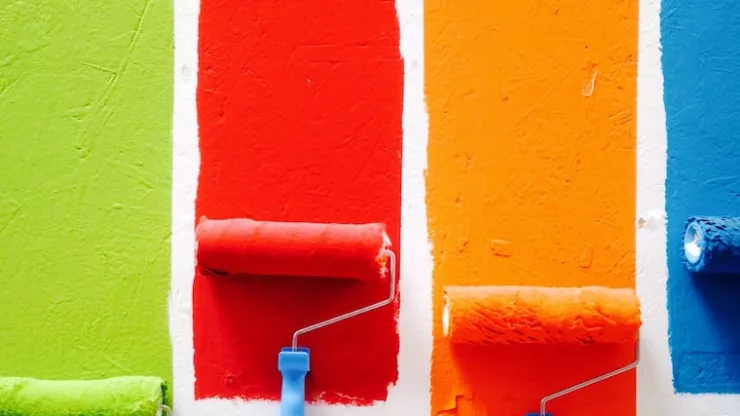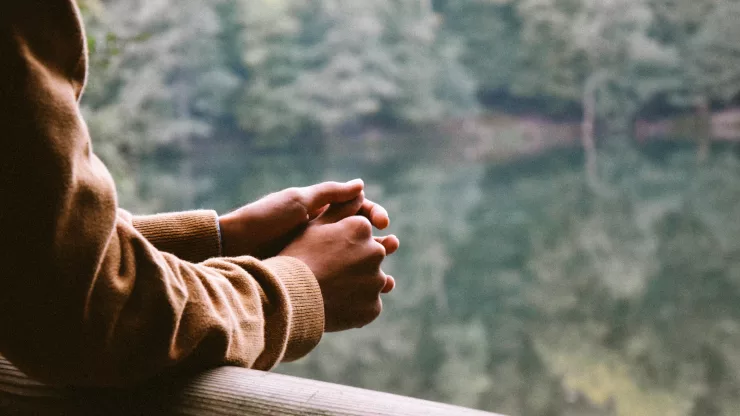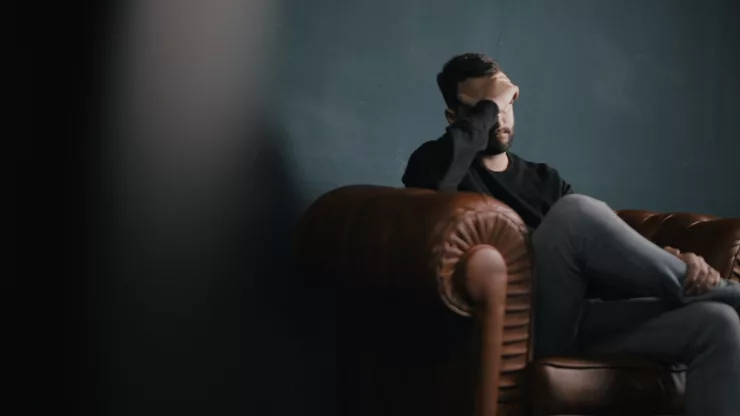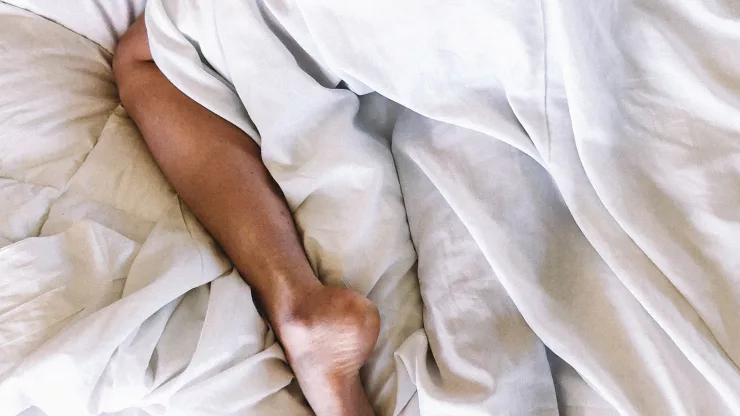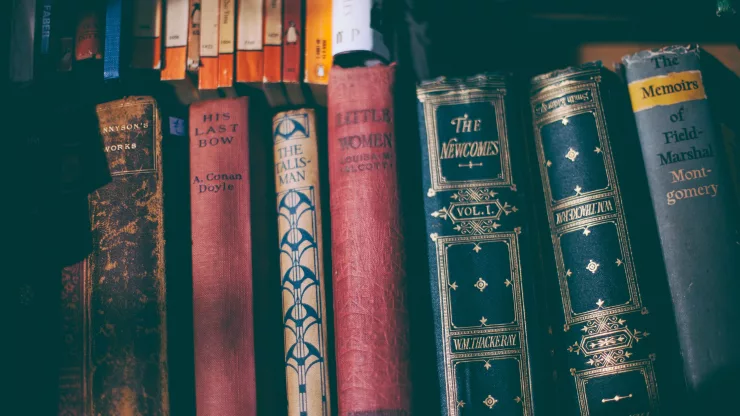Have you ever felt the emotional impact of a particular color? Perhaps you’ve felt energized by a bright red dress or calmed by a serene blue sky.
The influence of color on mood and happiness is undeniable.
Our emotions are deeply connected to the colors we see, and understanding this connection can help us harness the power of color to improve our overall well-being.
In this article, we’ll explore the psychology of color, the meanings behind different colors, and how we can use color to create a happier, more positive life.
Jump to Section
Why Color Matters for Mood and Happiness
Color is an essential part of our daily experience, and it has the power to influence our mood, emotions, and behavior. The colors we see can evoke different feelings and associations, often on a subconscious level.
For example, a vibrant yellow can elicit feelings of happiness and optimism, while a deep blue can evoke a sense of calm and relaxation.
By understanding the psychology of color, we can use color to improve our emotional well-being.
The Psychology of Color
Understanding the Impact of Color on Emotions
The impact of color on emotions is a complex subject, but there are some general trends that can help us better understand the relationship.
Warm colors, such as red, orange, and yellow, tend to be associated with energy, excitement, and passion.
Cool colors, such as blue, green, and purple, are often linked to calmness, relaxation, and peacefulness. Neutral colors, such as beige, gray, and white, are typically seen as understated and classic.
The Science Behind Color Psychology
The connection between color and emotion is not just a matter of subjective perception. There is scientific research that supports the idea that color can impact our mood and behavior.
For example, studies have shown that exposure to warm colors can increase heart rate and blood pressure, while exposure to cool colors can have the opposite effect.
Additionally, certain colors have been found to affect appetite, productivity, and creativity.
Colors and Their Meanings
How Different Colors Affect Mood and Happiness
Each color has its own unique meaning and emotional impact. Here are some of the most common colors and their associated emotions:
Red: The Color of Energy and Passion
Red is often associated with vitality, energy, and passion. It can evoke strong emotions, such as love, anger, and excitement.
In color psychology, red is said to increase heart rate and stimulate the senses. However, too much red can be overwhelming and cause feelings of anxiety.
Blue: The Calming Color
Blue is often seen as a calming and peaceful color. It is associated with serenity, trust, and reliability.
In color psychology, blue is said to lower heart rate and reduce stress. However, too much blue can have a negative impact on mood, leading to feelings of sadness or melancholy.
Yellow: The Color of Happiness and Optimism
Yellow is often associated with happiness, optimism, and positivity. It is a bright and cheerful color that can lift the spirits and evoke feelings of joy.
In color psychology, yellow is said to stimulate the mind and enhance creativity. However, too much yellow can be overstimulating and cause feelings of agitation.
Green: The Color of Balance and Harmony
Green is often associated with balance, harmony, and nature. It is a calming color that can promote relaxation and peace.
In color psychology, green is said to have a soothing effect on the mind and body. However, too much green can be monotonous and lead to feelings of boredom.
Purple: The Color of Creativity and Luxury
Purple is often associated with creativity, luxury, and royalty. It is a rich and regal color that can evoke feelings of elegance and sophistication.
In color psychology, purple is said to stimulate the imagination and enhance artistic expression. However, too much purple can be overwhelming and cause feelings of frustration.
Pink: The Color of Love and Compassion
Pink is often associated with love, compassion, and nurturing. It is a gentle and feminine color that can evoke feelings of tenderness and warmth.
In color psychology, pink is said to have a calming effect on the mind and body. However, too much pink can be cloying and lead to feelings of insincerity.
| Color | Emotion |
|---|---|
| Red | Energy |
| Blue | Calm |
| Yellow | Happiness |
| Green | Balance |
| Purple | Creativity |
| Pink | Love |
Color and Interior Design
Using Color to Create a Happy and Positive Home
The colors we choose for our home can have a significant impact on our mood and well-being. By using color strategically, we can create a happy and positive living environment.
Here are some tips for using color in interior design:
Choosing the Right Colors for Each Room
- Bedroom: Soft blues and greens promote relaxation and restful sleep.
- Kitchen: Warm yellows and oranges stimulate the appetite and create a welcoming space.
- Living Room: Neutral colors, such as beige and gray, provide a calming backdrop for socializing and relaxation.
- Home Office: Cool blues and greens promote focus and productivity.
Color Combinations for Mood-Boosting Effects
- Blue and green: This natural combination creates a peaceful and calming atmosphere.
- Yellow and orange: This vibrant combination adds energy and excitement to a space.
- Pink and purple: This soft and feminine combination creates a sense of warmth and love.
Color and Fashion
How to Use Colors to Boost Your Mood and Confidence
The colors we wear can also impact our mood and confidence. By choosing the right colors for our skin tone and personal style, we can create a happy and confident look.
Here are some tips for using color in fashion:
The Best Colors to Wear for Different Occasions
- Job Interview: Neutral colors, such as black and navy, provide a professional and polished look.
- Date Night: Red is a bold and passionate color that can evoke feelings of romance and attraction.
- Workout: Bright colors, such as pink and yellow, provide a fun and energetic look for exercise.
Color Trends for a Happy and Stylish Look
- Living Coral: This vibrant and cheerful shade is the Pantone Color of the Year for 2019.
- Lavender: This soft and soothing hue is a popular choice for spring fashion.
- Mustard Yellow: This warm and earthy color adds a pop of personality to any outfit.
Color and Food
The Connection Between Color and Appetite
The colors of our food can also influence our appetite and eating habits. By choosing colorful and nutritious foods, we can improve our overall health and well-being.
Here are some tips for using color in our diet:
Using Color to Make Healthy Food Choices
- Red and orange: These bright colors are often associated with fruits and vegetables that are high in vitamin C and antioxidants.
- Green: This color is often associated with leafy greens and other nutrient-dense vegetables.
- Purple and blue: These colors are often associated with antioxidant-rich fruits and vegetables, such as blueberries and eggplant.
Colorful Recipes for a Happy and Healthy Meal
- Rainbow Salad: Combine a variety of colorful fruits and vegetables, such as red peppers, orange carrots, yellow squash, green lettuce, and purple cabbage, for a nutritious and vibrant meal.
- Berry Smoothie Bowl: Blend together frozen berries, banana, almond milk, and Greek yogurt, and top with sliced fruit, granola, and chia seeds for a delicious and antioxidant-rich breakfast.
- Colorful Stir-Fry: Sauté a mix of colorful vegetables, such as red bell peppers, yellow corn, green broccoli, and purple eggplant, with your choice of protein for a healthy and balanced dinner.
Color and Art Therapy
Using Color to Improve Mental Health
Art therapy is a form of psychotherapy that uses art and creativity to improve mental health and well-being.
Color plays a significant role in art therapy, as different colors can evoke different emotions and reactions.
Here are some ways to use color in art therapy:
Coloring for Stress Relief
Adult coloring books have gained popularity in recent years for their stress-relieving benefits. Coloring intricate patterns or mandalas in calming colors, such as blue and green, can help reduce anxiety and promote relaxation.
Painting for Emotional Expression
Painting can be a powerful tool for emotional expression. Using bold and vibrant colors, such as red and yellow, can help express feelings of anger or excitement, while using soft and soothing colors, such as purple and pink, can help express feelings of sadness or calm.
Color and Personal Growth
Harnessing the Power of Color for a Happier Life
Understanding the psychology of color can help us make more informed decisions about the colors we surround ourselves with, whether it’s the color of our walls, the color of our clothes, or the color of our food. By harnessing the power of color, we can improve our mood, boost our happiness, and create a more positive and fulfilling life.
In conclusion, color is a powerful tool that can significantly impact our mood and happiness.
By understanding the psychology of color and learning how to use color strategically, we can harness its power to create a happier, more positive life.
Whether it’s painting our walls a calming blue, wearing a vibrant red dress, or eating a colorful salad, the colors we choose can have a profound impact on our overall well-being.
So, the next time you’re feeling down, remember the power of color and consider how you can use it to boost your mood and happiness.

With a deep passion for personal development, Ben has dedicated his career to inspiring and guiding others on their journey towards self-improvement.
His love for learning and sharing knowledge about personal growth strategies, mindfulness, and goal-setting principles has led him to create My Virtual Life Coach.
Contact Ben at [email protected] for assistance.
